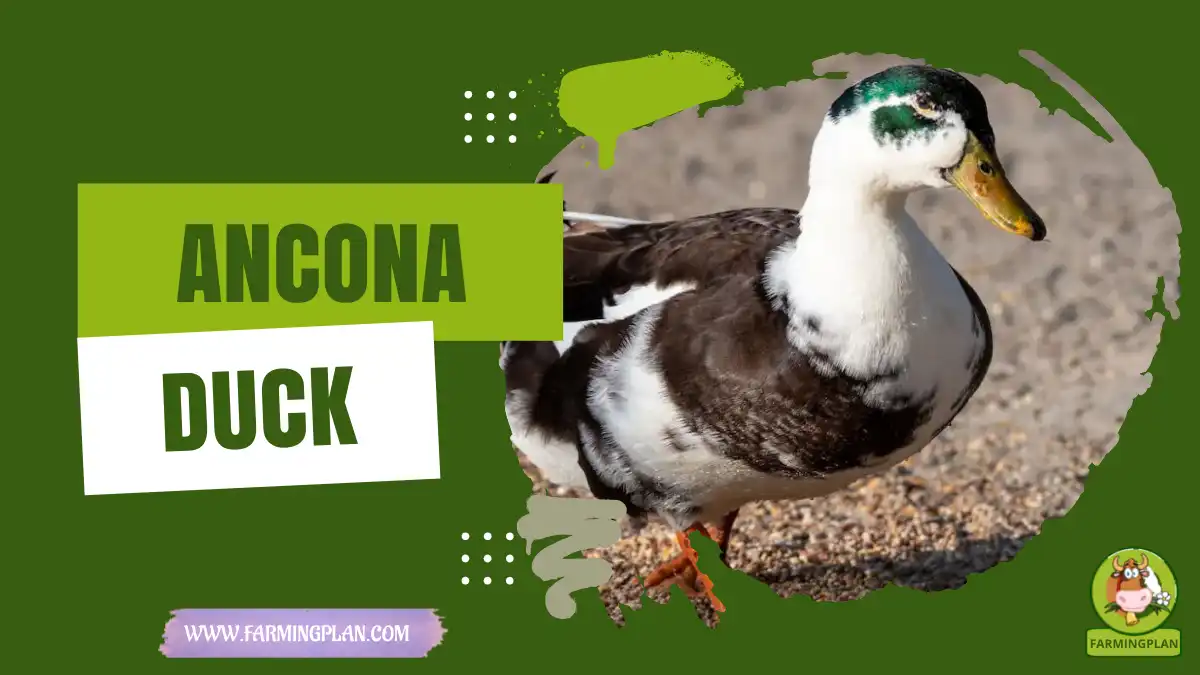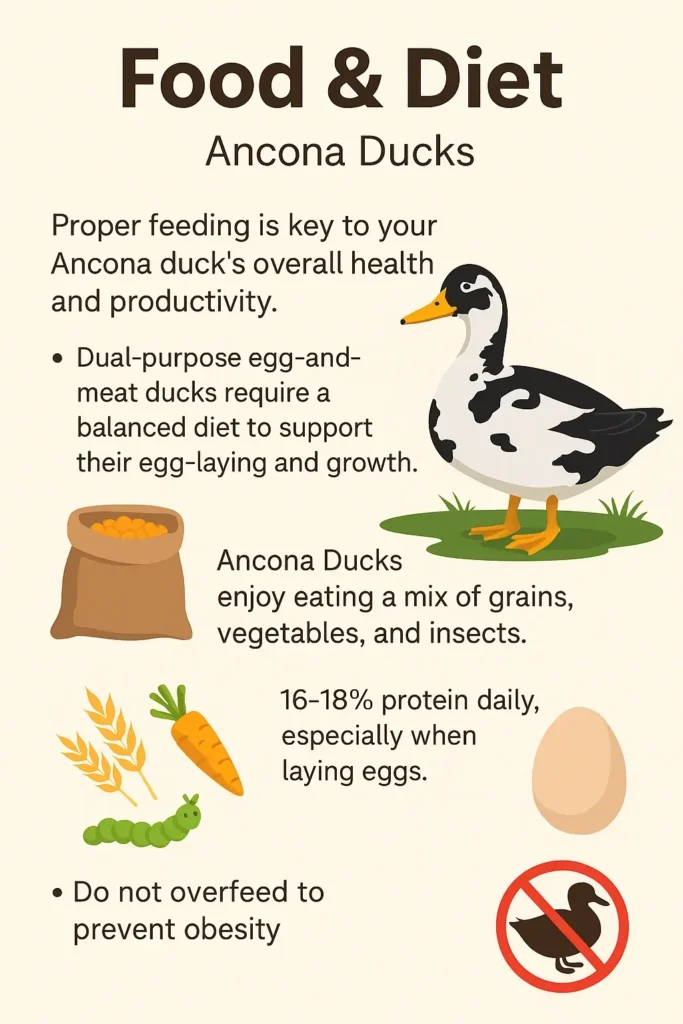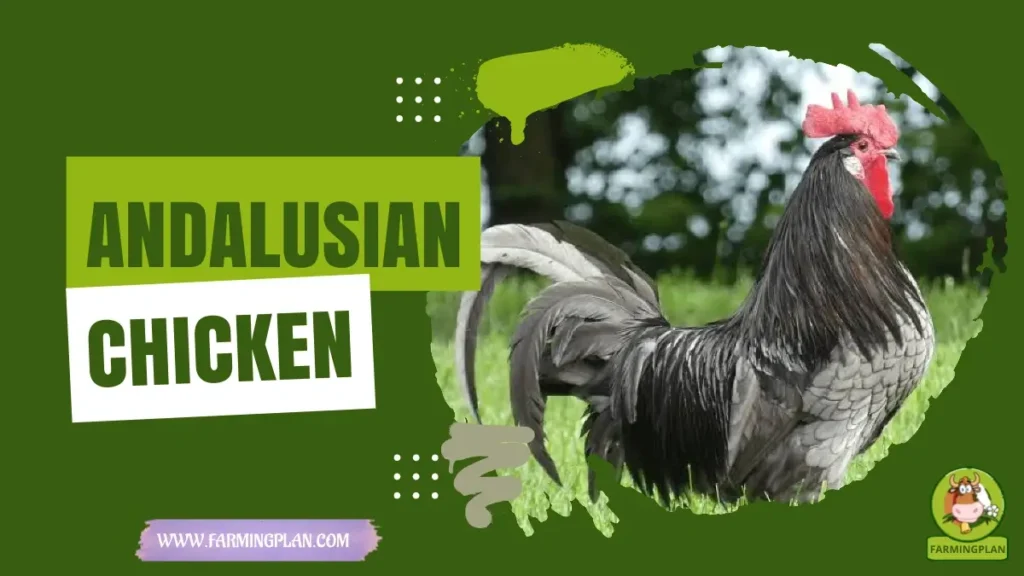The Ancona Duck, a beloved breed among farmers, breeders, and pet owners, is a marvel. With its striking mottled plumage and amiable nature, these ducks bring a unique charm to any backyard or small farm. Their color patterns, including the rare Lavender and White shades, are a sight. These ducks, not just pretty but also practical, are excellent layers of large eggs and mature into robust, healthy birds. Whether you’re seeking a few yard ducks to grace your pond or planning to breed a flock of heritage breed ducks, the Ancona Duck is the perfect choice. Their serene disposition, adaptability to customary conditions, and vibrant looks make them a top pick for anyone seeking a robust and cheerful duck breed.

History & Origin
The historical development of the Ancona Duck started in the twentieth century. American farmers created this breed in the USA to fulfill their need for a strong duck species for both food and egg production. Over time, these ducks gained popularity on small farms like Nantahala Farm, Duck Dance Farm, and Dippin Duck Farm. Their colorful looks and hardy nature made them favorites among conservation breeders who aimed to protect heritage ducks.
The original birds displayed the famous mottled plumage, with three-quarters white plumage covered in black spotting. These ducks were designed to thrive in outdoor living conditions and be easy for beginner farmers to raise. Breeding efforts among users produced a resilient Ancona Duck, which finds suitable homes in both small agricultural and domestic environments. Breeding Ancona Ducks requires understanding their mating process and properly managing newly hatched ducklings.
Characteristics
People value the Ancona Duck because of its one-of-a-kind physical appearance together with its solid body structure. These ducks present oval-shaped heads that show pleasant expressions on their faces. These birds express their strength by maintaining well-postured bodies as they navigate ponds along with yards without effort. Their most striking feature is their white feathers with colorful patches, which come from special genes like the sex-linked recessive chocolate, buff, and Blue genes. The best-marked black and chocolate birds display clear and beautiful patterns. Each Ancona Duck looks slightly different due to the color variation, with some ducks having a deep purple-grey color when the Blue gene is present.
Their feather colors come from special genes like the sex-linked recessive chocolate, buff, and Blue genes. The best-marked black and chocolate birds show clear and beautiful patterns. Each Ancona Duck looks a little different because of the color variation. Some ducks have a deep purple-grey color when the Blue gene is present.
Under normal conditions, Ancona Ducks reach adult size quickly. They are medium-sized birds, making them easy for farmers, breeders, and pet owners to handle. Their good size, strong bodies, and lovely colors make them beautiful and practical. Ancona Ducks have a lifespan of 7-10 years, so they require a long-term commitment from their owners.
Read More: Laying Ducks: How to Care for Laying Ducks
Nature & Temperament
Ancona ducks have earned their reputation for their peaceful character and social behavior, making them a perfect fit for families and farms. Ancona ducks reach their peak vitality while living in their natural flock setting since they prefer to remain in groups. Raising Ancona ducks together with other domestic animals including chickens or ducks allows them to establish close relationships that create a dynamic environment. Their gentle nature and relaxed, happy attitude make them a joy, ensuring they are a perfect fit for any family or farm.
Ancona Ducks are versatile creatures, thriving in various climate settings and adapting seamlessly to different farm sizes, from expansive properties to small backyard ponds. Their moderately low-maintenance traits make them suitable for new and experienced duck owners who maintain good health with basic care. Their ability to adjust to different environments ensures they bring joy and enthusiasm to any setting, making them a reassuring and confident choice for duck owners.
They get along well with other animals and enjoy being in a community, making them great for farms with multiple types of livestock. Their social duck behavior also means they do best when kept in pairs or small groups. It’s always a good idea to have more than one Ancona Duck to interact and form bonds with each other.
“Ancona Ducks Are More Than Just Beautiful—they’re Adaptable, Friendly, And Make Your Backyard Come To Life With Their Charm And Eggs!”
Food & Diet
Proper feeding is key to your Ancona duck’s overall health and productivity. Dual-purpose egg-and-meat ducks require a balanced diet to support their egg-laying and growth. Offering them a high-quality feed rich in proteins and other essential nutrients is vital to keeping them healthy and strong. Ancona Ducks need about 16-18% protein daily, especially when laying eggs.

Ancona Ducks enjoy eating a mix of grains, vegetables, and insects. In their natural environment, they’ll forage for worms, slugs, and small plants, which helps with their health and keeps them active. If you’re raising them in a backyard, ensure they can always access fresh greens and water. If you have a pond or yard ducks, they’ll naturally enjoy foraging for food, but be sure to provide a supplement of duck feed to ensure they get all the nutrients they need.
When feeding Ancona Ducks, you should also consider the egg size. Ducks that lay larger eggs need slightly more food to maintain their energy levels. During the winter months, when foraging can be more complex, ensure they have enough food to stay healthy.
Do not overfeed them, though, as this can lead to obesity, affecting their laying ability and overall health. Providing them with balanced natural food and quality feed is the best way to raise happy, excellent layers.
Read More: Swedish Blue Duck: A Calm, Beautiful Farm Companion
Usage & Purpose
The Ancona Duck is a true all-purpose duck known for its meat and egg production. These ducks are dual-purpose, making them a top choice for small farms, backyard setups, and even larger breeding operations. They are excellent layers, producing large and medium-sized eggs with various shell colors. Ancona Ducks typically start laying eggs at around 5-6 months and can lay up to 210 eggs yearly. The Ancona Duck serves farmers well because of its high productivity and relaxed nature, which provides dependable egg production.
Animal husbandry operators raise Ancona Ducks for their egg production and premium meat quality. Farmers find the Ancona Duck suitable for meat production because its tender flavor profile characterizes their beef. Whether you’re raising them for their eggs, meat, or just as beautiful, social companions, these ducks are a practical addition to any homestead.
These ducks are also excellent pets and suitable for families with children or those who want to keep them as social ducks. Their adaptability to different environments makes them an excellent fit for novice duck owners and experienced breeders. The Ancona Duck is a versatile and valuable breed whether you want them for their eggs and meat or to add some life to your farm.
Special Features
Ancona Duck stands out through its mottled plumage because it weaves black drake colorations with chocolate duck shades, creating a pattern for each bird. Each bird possesses this unique color pattern, which exposes pigment sections among off-white feathers, making it recognizable for this breed. The attractive patterns of this duck breed earn them popularity among bird enthusiasts who value visual appearance.
The Ancona Duck stands out with its exceptional tolerance to different climates. Ducks of this type show adaptability that enables their effectiveness across various farming regions spanning hot to cold environments. Because they can cope with numerous environmental systems., these ducks maintain their heritage breed status.
The Ancona Duck features an interesting sex-linked characteristic that shapes its coloration while impacting egg pigmentation, making it exceptionally distinctive. Thanks to this distinctive genetic trait, individuals who want particular color types from their Ancona Duck breeding program find it satisfying. These ducks receive high value because they exhibit excellent maternal behavior and skills in raising their offspring.
The Ancona Duck stands out as a preferred pet and farm animal because of its solid health and rapid reproduction rate. Ancona Ducks represent a scarce domestic animal species with diverse characteristics that increase their value for agricultural operations and domestic gardens.
Read More: Barbary Ducks: Why They’re Perfect for Your Farm
Health Issues and Prevention
Ancona Ducks are generally hardy and healthy, but like any breed, they can experience common health issues. Being a sustainable heritage duck breed, they tend to have fewer genetic problems than some other breeds, but there are still a few things to watch out for to ensure they stay in top shape.
Duck mites, along with external parasites known as duck mites, can cause skin irritation, leading to health problems in ducks. Proper inspection of Ancona Ducks, combined with appropriate care protocols and treatments, will prevent severe outbreaks of parasites. Animals using ponds or natural water resources need a sanitized living space to avoid diseases infecting unclean water bodies.
Another issue to watch is obesity. While these ducks are excellent layers, they can overeat if they are not given a balanced diet. Too much food, especially high-fat treats, can lead to weight problems that affect egg production and overall health. Ensure you feed your Ancona Ducks a balanced diet and not overfeed them.
The health of Ancona Ducks depends upon the same bacterial infections and respiratory issues as other duck species when kept in wet or unclean environments. These animals’ health condition depends heavily on a clean and dry habitat alongside adequate ventilation. Good hygiene practices help prevent the spread of infections and ensure your ducks are healthy and happy.
By providing a clean, well-maintained environment, a balanced diet, and regular health checks, you can free your Ancona Ducks from these common health issues and ensure they live long, productive lives.
Step-by-Step Farming Guide/Pet Owner Care Guide
The Ancona Ducks provide owners entertainment value, profitable egg production, and meat benefits. The following guide offers steps to manage these delightful duck species properly.
Setting Up the Habitat
A suitable and clean environment serves as your first requirement. The well-being of your Ancona Ducks depends on a pond or significant water source for swimming, so you must provide them when housing at either a farm or backyard setup. Ducks love water, and it helps them maintain their feathers and overall health. If yA kiddie pool will work, if you don’t have a pond, they also need a secure shelter to protect them from predators and the elements. A well-ventilated duck house with plenty of bedding will keep them cozy and safe.
Feeding Your Ducks
Feeding your Ancona Ducks is easy. Offer them duck feed with a 16-18% protein content, especially during laying seasons. You can supplement their diet with greens, grains, and insects from your yard or farm. Make sure they always have access to fresh water for drinking and swimming. Avoid feeding them too many treats, as overfeeding can lead to obesity. Foraging is a great way to let them eat naturally and stay active.
Maintaining Cleanliness
Maintaining clean environments is critical to preventing health diseases. The shelter’s bedding requires regular replacement and frequent water cleansings to prevent bacterial growth. A dry living environment should always be maintained since moisture triggers breathing problems and allows harmful bacteria to develop. The space available for multiple ducks should be sufficient to prevent their stress and aggressive behavior.
Providing Social Interaction
For optimal happiness of Ancona Ducks, it is vital to maintain groups of three or more individuals. Ducks can be happy because they avoid feeling alone when they live with others. Ancona ducks prefer social interactions with other animals since they live harmoniously with chickens and ducks. Owners find the Ancona Ducks manageable and pleasant because of their tolerable disposition.
Handling and Breeding
Regarding handling, Ancona Ducks are generally calm and easygoing, making them ideal for families with children. If you’re interested in breeding them, remember that their sex-linked recessive traits make them unique. During the breeding process, you will find either black drake, chocolate duck, or white offspring. Select healthy stock birds since they lead to the production of high-quality offspring. You should create a peaceful environment where birds can lay eggs while promoting their instinctive behavior for nesting.
Expert Tips & Best Practices
Ancona Ducks need constant care, yet proper methods will enable their healthy development, bring happiness, and provide both eggs and meat benefits. Professional recommendations exist for maintaining Ancona Ducks’ health while ensuring their happiness.
Maintain Clean and Dry Living Conditions
An Ancona Duck always requires a clean and dry environment for its housing area. Bacterial infections and other diseases affect ducks when they encounter unsanitary food environments. Regular cleaning of their shelter, combined with bedding soiling removal, is necessary, followed by the replacement of fresh straw or hay. A pond available to the ducks must contain clean and contaminant-free water.
Watch for Egg-Laying Patterns
Since Ancona Ducks are excellent layers, you’ll want to keep track of their egg-laying patterns. Ducks typically lay in the morning and prefer quiet, private spots for nesting. Ensure they have access to a nesting box to encourage this natural behavior. A clean, dry nesting area ensures the eggs remain in good condition.
Don’t Overfeed
It seems appealing to give additional food to your ducks, but you must refrain from overfeeding since it creates obesity issues. You should provide your ducks with wholesome duck food, grasses and grains, and sporadic favorites. The proper balance of food enables healthy duck behavior and reasonable fitness, which leads to steady medium-sized egg production.
Offer Space to Forage
Enabling your Ancona Ducks to feed on natural vegetation should be considered. Plants, fresh grass, insects, and ample space in the yard provide both stimulation and well-being for Ancona Ducks. When Ancona Ducks forage, they find natural foods that replace the requirement for purchased commercial feed. This type of feeding approach depends on the sustainable and eco-friendly care of your Ancona Ducks.
Be Consistent with Health Checks
Make it a habit to inspect your ducks for external parasite indications consisting of mites or lice. Any external parasite signs you find should lead to immediate treatment to stop their spread. Regular observation of the ducks’ physical state should aim to avoid both obesity and malnourishment. Regular health examinations enable you to detect issues at early stages that avoid becoming severe. Regular health checks will help catch problems early before they become serious.
Manage Breeding Carefully
When breeding your Ancona Ducks, select healthy stock birds with the best characteristics. The sex-linked recessive traits in these ducks can produce a variety of colors in offspring, so keep this in mind when planning your breeding program. By focusing on the quality of your breeding stock, you can ensure that you’re producing strong, healthy birds that will thrive on your farm. By following these best practices, you’ll ensure that your Ancona Ducks live healthy, happy lives and become a productive part of your farm or homestead.
FAQ
What is the origin of Ancona duck?
Ancona duck are believed to have been developed in the United States in the early 20th century, and they were named after the Ancona breed of chicken.
What are the typical weight ranges for Ancona duck?
Ancona ducks are medium-sized, with females weighing 6 to 7 pounds and males slightly heavier.
How many eggs do Ancona duck lay annually?
Ancona duck are prolific layers, producing between 210 to 280 large eggs each year, which can be white, cream, blue-green, or spotted.
Are Ancona duck suitable for meat production?
Yes, Ancona duck are considered a dual-purpose breed. They are valued for their flavorful, lean meat, which is less fatty than other breeds.
What is the temperament of Ancona duck?
Known for their docile and friendly nature, Ancona ducks are also active foragers, enjoying activities like grazing and hunting for insects.
Conclusion
Ancona Duck is a resilient and versatile bird species because of its feather patterns and functional domestic value. The Ancona breed provides novice and expert farmers with productive egg-laying and excellent meat quality. Their friendly nature and ease of care make them ideal for backyard flocks. By providing a clean environment, proper nutrition, and regular health checks, you can enjoy the many benefits these ducks bring to your homestead.

